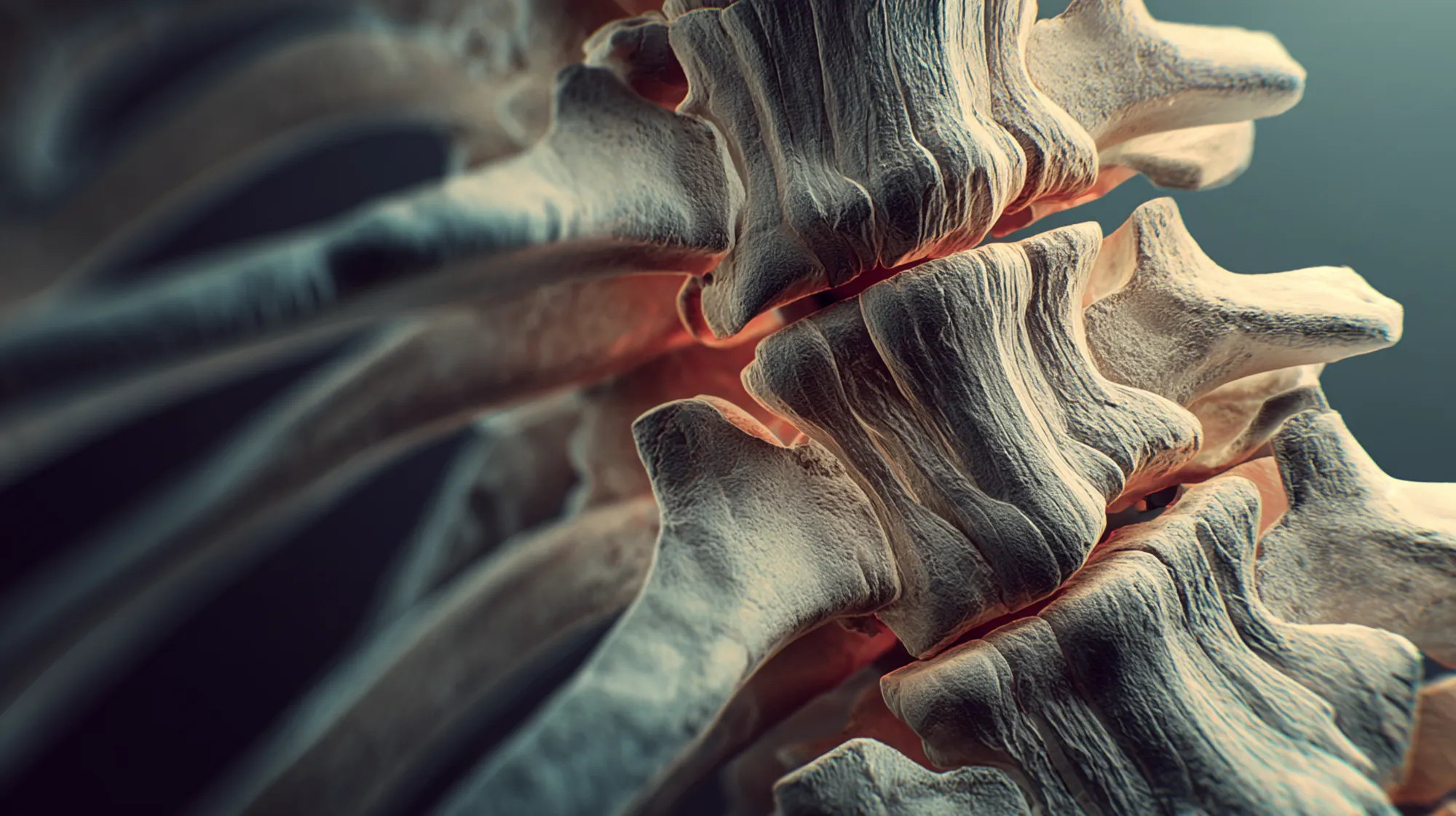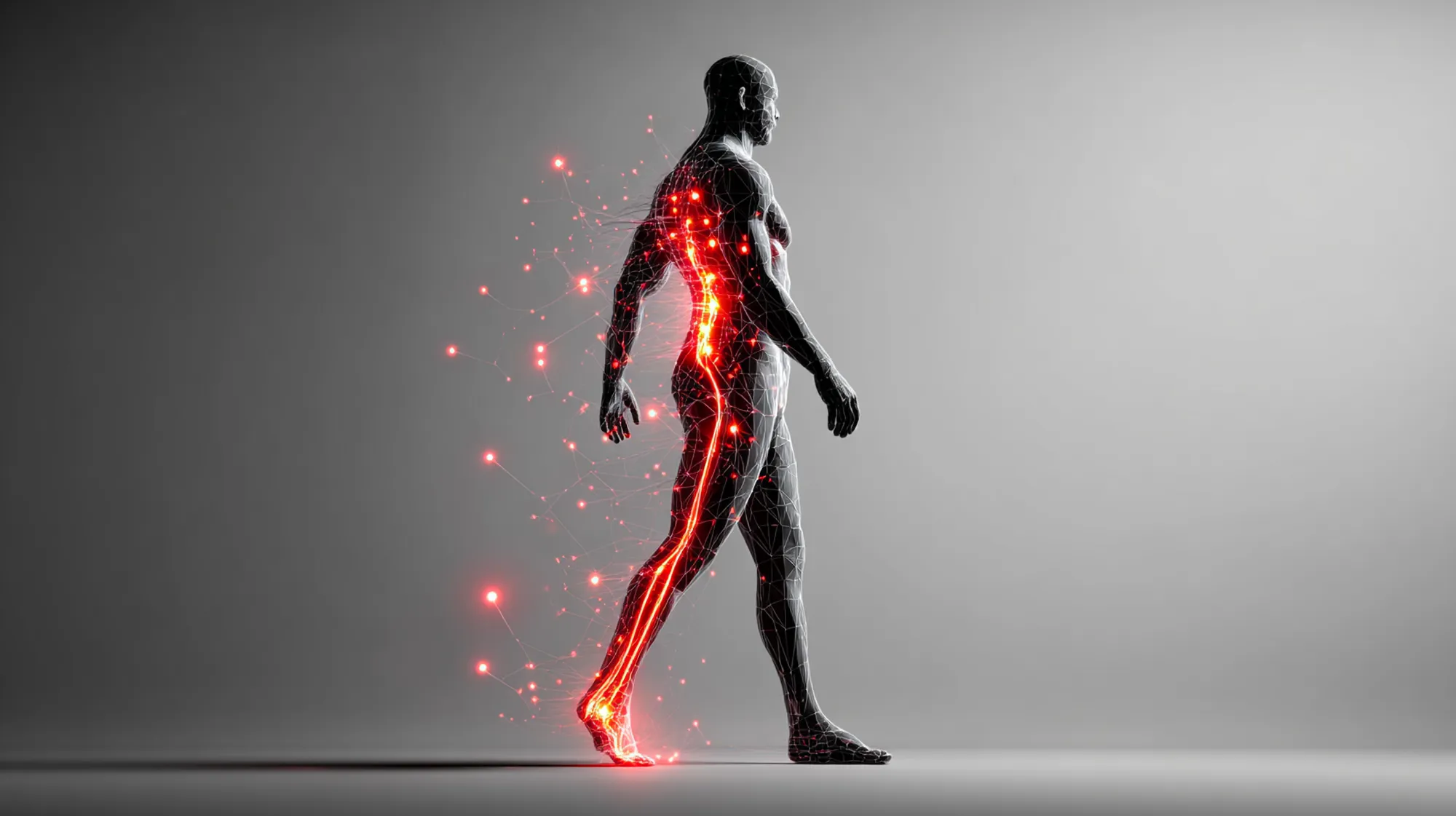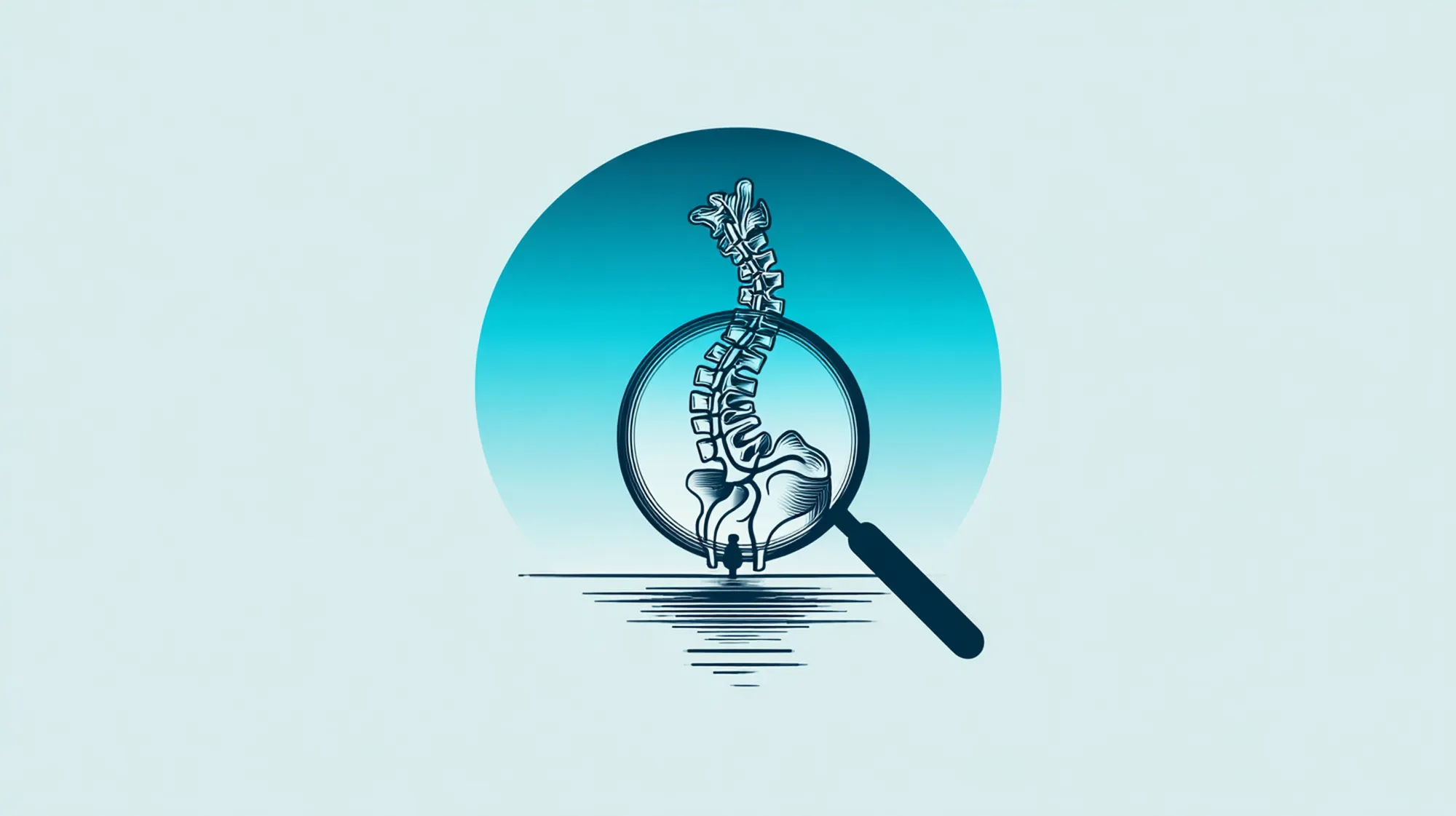Sciatica – the infamous “pinched nerve” pain that radiates down the leg – is both common and treatable. In fact, roughly 40% of people will experience sciatica at some point in their lives. It often starts as lower back discomfort and can turn into sharp, shooting pain that makes standing or walking difficult. The good news? Most cases of sciatica are manageable with conservative care, and chiropractic adjustments combined with targeted exercises can provide lasting relief. In this guide, we’ll cover Sciatica 101: what sciatica is, its causes and symptoms, and how chiropractic care and simple at-home measures can help ease your sciatic nerve pain and get you back on your feet.

What Is Sciatica?
Sciatica refers to pain along the path of the sciatic nerve, the longest nerve in your body that runs from your lower spine through the buttock and down each leg. When this nerve becomes irritated or compressed – often by a pinched nerve in the lower spine – it can cause a distinct set of symptoms known as sciatica. Typically, only one side is affected (either the left or right leg). Sciatica pain can range from a mild ache to an intense, electric shock-like sensation that radiates from the lower back or buttock down the back of the thigh and calf.
Along with pain, people with sciatica often experience other nerve-related symptoms:
- Tingling or “pins-and-needles”: A prickling sensation, like when your leg falls asleep.
- Numbness: Reduced feeling in parts of the buttock, leg, or foot on the affected side.
- Muscle weakness: Difficulty moving the affected leg or foot (in severe cases, you might have trouble lifting your foot – a condition called “drop foot”).
Usually, sciatica symptoms are triggered by certain movements. You might notice a jolt of pain when you cough, sneeze, stand up from a chair, or bend at the waist. The pain and tingling can make everyday activities – like walking, climbing stairs, or even sleeping – a real challenge.
Severe Warning Signs: In rare cases, sciatica can be accompanied by loss of bladder or bowel control or profound leg weakness. These signs could indicate a serious condition (such as cauda equina syndrome) and require immediate medical attention. For most people, though, sciatica is painful but not dangerous, and it can be relieved with proper care.

Common Causes of Sciatica
Sciatica is not a disease in itself, but a set of symptoms caused by an underlying issue. The hallmark cause is a pinched or compressed nerve in your lower back. Here are the most common culprits behind sciatica:
- Herniated Disc: This is the #1 cause of sciatica, when one of the discs between your vertebrae bulges or ruptures and presses on a nerve root. A herniated disc in the lumbar (lower back) region can directly compress the sciatic nerve, sparking pain down the leg.
- Bone Spurs or Arthritis: Overgrowth of bone (osteophytes) due to arthritis or aging can narrow the spaces in the spine. A bone spur on the spine can pinch the sciatic nerve or the nerves that combine into it. Similarly, spinal stenosis (a narrowing of the spinal canal) or foraminal stenosis (narrowing of the nerve exit pathways) can squeeze nerve roots and cause sciatica.
- Spondylolisthesis: This is a slippage of one vertebra over another, which can pinch nerves. It’s another possible cause of sciatic nerve compression.
- Injury or Trauma: A fall, car accident, or sports injury that impacts the lower back or pelvis can inflame or damage the sciatic nerve. Even deep muscle bruising in the buttock (like from a hard fall) can irritate the nerve.
- Pregnancy: Carrying extra weight and hormonal changes that loosen ligaments can trigger sciatica in some pregnant women. The growing uterus may put pressure on the sciatic nerve, especially in later trimesters. The good news is pregnancy-related sciatica usually resolves after birth.
- Other Causes: Though less common, tumors or cysts in the spine, and very rarely infections, can press on the sciatic nerve. There’s also a condition called piriformis syndrome, where the piriformis muscle in the buttock irritates the sciatic nerve (mimicking true sciatica).
Often, several factors combine to set the stage for sciatica. Age-related wear and tear plays a role – discs degenerate over time and may herniate more easily in one’s 40s or 50s. Jobs or activities that strain the back are another factor: heavy lifting, lots of bending/twisting, or even long hours of driving or sitting at a desk can increase your risk. Lack of regular exercise or poor core strength can also contribute, since weak supporting muscles put more stress on the spine.
Bottom line: Anything that pinches or inflames the sciatic nerve (or the nerve roots in the lower spine) can cause sciatica. Identifying the underlying cause – whether it’s a slipped disc, arthritis, or something else – is key to treating the problem and not just the symptoms.

Symptoms of Sciatica
We’ve touched on sciatica symptoms, but let’s summarize the classic signs to look out for:
- Lower Back and Leg Pain: Sciatica typically causes pain that starts in the lower back or buttock and shoots down the back of the thigh and calf. It often travels below the knee and can even extend into the foot and toes, following the sciatic nerve’s path. The pain is frequently described as sharp, burning, or “electric shock” pain. It may be constant or it may flare during certain actions (like when you cough, sneeze, or lift your leg).
- Unilateral Symptoms: In the majority of cases, only one leg is affected. You might have pain in your right leg while your left leg feels fine, or vice versa. Bilateral sciatica (both legs) is possible but very uncommon.
- Tingling and Numbness: Often, people with sciatica report a pins-and-needles sensation or areas of numbness. For example, you might feel tingling in your calf or foot, or part of your foot might feel “asleep” or numb. This happens because the nerve signals are partially blocked by the compression.
- Muscle Weakness: Because the sciatic nerve also carries motor signals to your leg muscles, prolonged or severe compression can lead to weakness. You might find it hard to flex your ankle or toes or have trouble walking on your heels or tiptoes. In extreme cases, the foot may drop or not lift properly when you walk (foot drop). This level of weakness is a red flag that needs prompt medical evaluation.
- Reflex Changes: This one you might not notice yourself, but during an exam a provider may test your reflexes (like the Achilles tendon reflex) – sciatica can diminish the normal reflex responses in the ankle or knee due to nerve involvement.
Sciatica pain can range from annoyingly mild to downright debilitating. Some people experience a dull ache with occasional twinges, while others have lightning-bolt pains that make it hard to get out of bed. The intensity can also fluctuate day to day or with activity. Prolonged sitting, sudden movements, or lifting typically worsen the pain, which is why sciatica can make working or caring for family challenging.
Most cases of sciatica improve over time, but if you’ve had pain lingering more than a week or two with no improvement – or if it’s getting worse – it’s time to seek treatment. As mentioned earlier, seek immediate care if you experience severe symptoms like significant leg weakness or any loss of bladder/bowel control, as those require urgent intervention.

Chiropractic Solutions for Sciatica Pain Relief
When sciatica strikes, you have several options for treatment. Mainstream medical care often begins with anti-inflammatory medications, muscle relaxers, or physical therapy. In severe cases, epidural steroid injections or even surgery (like removing a large disc herniation) might be considered. However, many people are now seeking relief through chiropractic care, which offers a more natural, drug-free approach to treating sciatica.
Chiropractic care focuses on the health of the spine and nervous system. A chiropractor can perform spinal adjustments (spinal manipulations) to correct misalignments in the vertebrae and help take pressure off the sciatic nerve. According to the Mayo Clinic, chiropractic spinal adjustments can help restore spinal movement and reduce pain, and spinal manipulation has been found to be as safe and effective as standard medical treatments for low back pain. In the context of sciatica, by gently re-aligning the lumbar spine or pelvis, a chiropractor may relieve the compression on the nerve root that’s causing your pain.
Here’s how chiropractic treatment typically tackles sciatica:
- Comprehensive Evaluation: A chiropractor will first assess your spine, posture, and symptoms. They may take or review X-rays or an MRI if available to pinpoint what’s compressing the nerve (for example, a specific disc herniation at L4-L5). This exam helps them tailor a treatment plan to address the root cause of your sciatica, not just the symptoms.
- Spinal Adjustments: Using controlled force and specific techniques, the chiropractor will perform adjustments (also called spinal manipulations) to the joints of the spine. These adjustments aren’t generally painful – you might feel relief and improved mobility right after an adjustment. The goal is to realign the spine, improve its movement, and reduce nerve irritation. Many patients find that these adjustments bring noticeable pain relief, sometimes even immediately after a session. (It’s not magic – by removing the pressure from the nerve, the body can start to heal and pain can decrease.)
- Therapeutic Exercises and Stretches: Chiropractors often prescribe specific stretches and exercises for you to do at home that complement the in-office treatments. For sciatica, this often includes exercises to gently stretch the hamstrings, piriformis, and lower back, as well as core-strengthening moves. Strengthening the core and back muscles helps stabilize your spine, potentially preventing future sciatic flare-ups. In essence, the chiro helps “fix” the issue and then gives you tools to keep it from coming back.
- Additional Therapies: Depending on the clinic, other modalities might be used. This can include massage therapy to relax tight muscles (a tight piriform muscle in the buttock can aggravate sciatic pain), traction or decompression therapy to gently widen the space between vertebrae, cold/heat therapy, ultrasound, or even acupuncture if it’s offered. These therapies can reduce inflammation and enhance healing. Many chiropractic clinics adopt a holistic approach – for instance, The Well-House Chiropractic also guides patients on nutrition and wellness, recognizing that factors like inflammation in the body can influence pain.
One big advantage of chiropractic is that it’s a conservative, non-pharmaceutical treatment. With opioid medications and even over-the-counter painkillers carrying side effects and risks (especially when used long-term), chiropractic care is appealing for those who want to avoid medications. In fact, a recent study in 2025 found that people with sciatica who received chiropractic spinal manipulations needed fewer opioid painkillers and had fewer side effects over the following year compared to those who only took medication. Starting chiropractic care sooner led to less need for invasive measures later – a compelling reason to consider a chiropractor when sciatica starts interfering with your life.
How long does it take to feel better with chiropractic? It’s important to have realistic expectations: sciatica that’s been building for months won’t always disappear overnight. Multiple sessions are usually needed to fully address the issue. Many patients report significant improvement after a few weeks of consistent care – for example, after 4–6 adjustments combined with daily exercises. Most mild-to-moderate cases of sciatica (those not requiring surgery) resolve within about 4 to 6 weeks with proper treatment. Chiropractic aims to accelerate that healing timeline by correcting the underlying spinal misalignments and promoting the body’s natural healing processes. And unlike taking painkillers which just mask the pain, chiropractic care works at removing the cause of the pain.
Finally, chiropractic care is very safe when performed by a licensed, trained chiropractor. Serious complications are extremely rare, and chiropractors will refer out to a spine surgeon or specialist if they suspect a condition that chiropractic can’t correct. The focus is always on the patient’s well-being. So if you’re suffering from sciatica, seeing a chiropractor is a smart option to get pain relief and avoid more aggressive interventions. As Mayo Clinic’s experts note, chiropractic spinal manipulation “appears to work and to be as safe as standard treatments” for back pain – which should give you confidence in trying this route for sciatica relief.
Local Care in Chillicothe: Sciatica can be frustrating and limiting, but you don’t have to suffer through it. At The Well-House Chiropractic, we have helped many patients in Chillicothe and the surrounding North Missouri communities find relief from sciatica through gentle, personalized chiropractic care. Our approach combines spinal adjustments with targeted stretches and lifestyle advice to address your pain from all angles. If you’re in the Chillicothe area and struggling with sciatic nerve pain, let us help you get back to living pain-free. We’re here for you – from acute pain relief to long-term wellness, our goal is to get you moving comfortably again.

Tips for Sciatica Relief at Home
While professional treatment is important, there’s also a lot you can do on your own to manage and even improve sciatica symptoms. Here are some self-care strategies and lifestyle tips to complement your chiropractic care (or to try even before you see a provider):
- Keep Moving (Gently): It might be tempting to stay in bed, but prolonged rest can actually make sciatica worse. Short-term rest (a day or two) can calm an acute flare-up, but after that, try to stay lightly active. Simple activities like walking or gentle stretching prevent stiffness and help reduce nerve irritation. Listen to your body – you don’t want to aggravate the pain, but light movement is better than none.
- Stretch Tight Muscles: Focus on stretching your lower back, hamstrings, and hips, as these areas often contribute to sciatic pain. Tight hamstrings, for example, can tug on the lower back and worsen nerve pressure. Gentle yoga stretches (like the pigeon pose or a seated hamstring stretch) can be very helpful. Many people see significant improvement in pain by regularly stretching the hip and hamstring muscles. Aim to stretch a couple of times a day, holding each stretch for 20–30 seconds. Avoid any bouncing or jerky motions – slow and steady is the way.
- Ice and Heat Therapy: In the first few days of a new sciatic pain episode, apply ice packs to your lower back or buttock (wherever the pain is originating) to reduce inflammation. Cold therapy is most effective in the initial inflammatory stage – apply for about 15-20 minutes, several times a day. After 2-3 days, introduce heat therapy: a warm heating pad or hot shower can help relax tight muscles and increase blood flow to the area. Some people find the best relief by alternating ice and heat – listen to your body and see what feels best. Always protect your skin with a cloth when using ice or heat.
- Over-the-Counter Relief: Non-prescription anti-inflammatory medications (like ibuprofen or naproxen) can help reduce pain and swelling in the short term. Make sure to use as directed and be mindful of any contraindications. While these meds won’t fix the cause of sciatica, they can make symptoms more tolerable while you work on long-term solutions. (Tip: Pairing an NSAID with stretching and ice/heat can significantly ease a bad pain day.)
- Posture Matters: Pay attention to your posture, both sitting and standing. Slouching or prolonged sitting – especially on very soft couches or non-supportive chairs – can exacerbate sciatica. When sitting, choose a chair with good lower back support, keep both feet flat on the floor, and consider using a small pillow or rolled towel behind your lower back. At work, adjust your chair or monitor height to avoid hunching. When lifting objects, use your legs (bend your knees, keep your back straight) to avoid straining your lower back. These small adjustments reduce unnecessary pressure on your lumbar discs and nerves.
- Stay Active & Build Core Strength: In the long run, regular exercise is one of the best ways to prevent sciatica from coming back. Low-impact activities like walking, swimming, or cycling are spine-friendly and help keep your body weight in check (extra weight puts added stress on the spine). Additionally, core strengthening exercises – think Pilates, planks, or specific physical therapy exercises – provide more support for your spine, so it’s less prone to nerve pinches. Even after your pain subsides, continuing these habits will help keep sciatica at bay.
- Consider Complementary Therapies: Other non-invasive treatments have helped some sciatica sufferers. For example, massage therapy can loosen tight lower back and gluteal muscles, relieving pressure on the sciatic nerve. Acupuncture, the ancient practice of inserting tiny needles at specific points, has shown promise for chronic back pain and sciatica (results vary per individual). Always go to licensed professionals. While these therapies may not cure a structural problem like a big herniated disc, they can certainly ease pain and support your overall healing process.
Remember, consistency is key. Doing a few stretches one day and then forgetting about them for a week won’t yield results. Make these self-care tips part of your daily routine. If any exercise or stretch significantly worsens your pain, stop doing it and consult a professional. And if you’re ever unsure about what’s safe, don’t hesitate to ask your chiropractor or healthcare provider for guidance. They can show you the right form and intensity for exercises that are appropriate for your specific condition.
Sciatica can be stubborn, but with the right combination of professional care and home strategies, relief is within reach. Most people (an estimated 80%–90%) with sciatica recover without needing surgery – and that includes many who find relief through chiropractic and self-care. So stay encouraged: by educating yourself (which you’re doing right now!) and taking proactive steps, you’re already on the path to putting sciatica behind you.
If you’re in Chillicothe, MO (or nearby) and struggling with sciatica, The Well-House Chiropractic is here to help. We’ve treated many of our Chillicothe neighbors for sciatic nerve pain, and we understand how disruptive it can be. Our approach is gentle, effective, and personalized to your needs – whether you’ve just started feeling symptoms or have been battling sciatica for months. You don’t have to live with that pain. Give us a call or schedule an appointment online, and let’s work together on a chiropractic solution to get you out of pain and back to the activities you love. Relief might be closer than you think!
Now Scheduling

FAQs
What is the main cause of sciatica?
The most common cause of sciatica is a herniated disc in the lower spine that presses on one of the nerve roots of the sciatic nerve. This “pinched nerve” scenario often occurs at the L4-L5 or L5-S1 spinal level and can send pain shooting down the leg. Other causes include bone spurs or spinal stenosis (which narrow the pathways and compress the nerve), as well as injuries or spondylolisthesis (a vertebra slipping out of place). Even tight piriformis muscles deep in the buttocks can irritate the sciatic nerve in some cases. Identifying the underlying cause is important because it guides the best treatment approach.
Can a chiropractor help relieve sciatica pain?
Yes – many people find significant relief from sciatica through chiropractic care. Chiropractors are trained to address misalignments in the spine that may be compressing the sciatic nerve. Spinal adjustments (manipulations) can alleviate pressure on the nerve, improve spinal mobility, and reduce inflammation, thereby reducing pain. Chiropractors also often provide stretching and exercise guidance to support your recovery. Research has shown that starting chiropractic treatment early can decrease the need for pain medications like opioids down the line. It usually takes a series of adjustments (over a few weeks) to get full relief, but chiropractic is a safe, non-invasive approach worth considering for sciatica.
How long does sciatica usually last?
The duration of sciatica can vary. In many cases, acute sciatica may resolve within about 4 to 6 weeks, especially with proper self-care and treatment. Mild episodes sometimes improve even sooner. However, if the underlying cause is not addressed, sciatica can become chronic (lasting 2+ months) or recur intermittently. Severe cases – for example, from a large disc herniation – might take a few months to fully heal even with treatment. It’s important to note that if your sciatica isn’t improving at all after a few weeks, you should seek medical care. Early intervention (with chiropractic, physical therapy, etc.) can prevent a prolonged course. Also, avoid simply “toughing it out” for many months; untreated nerve compression over a long period can lead to permanent nerve changes. So, while many people recover in a month or so, listen to your body and get care if it’s not getting better within a reasonable time.
What exercises help relieve sciatica?
Gentle stretching and low-impact exercises are best for sciatica. Stretches that target the hamstrings, glutes, and hip flexors can reduce tension on the sciatic nerve. For example, doing a seated or lying hamstring stretch (keeping your leg straight and reaching toward your foot) or a figure-4 stretch (crossing one ankle over the opposite knee and stretching the piriformis muscle) can be very effective. Many people find that stretching tight hip and hamstring muscles leads to significant improvement in sciatic pain. Yoga poses like the pigeon pose, child’s pose, or gentle spinal twists can also help with flexibility and pain relief. In terms of exercise, start with low-impact activities: walking, swimming, or using an elliptical machine can promote blood flow and healing without jarring your spine. Always avoid high-impact or heavy lifting workouts during recovery, as those can worsen sciatica. And remember to ease into exercises slowly – if a certain movement sharply increases pain, stop and try a different modification. It can be very helpful to learn specific exercises from a chiropractor or physical therapist, so you know you’re doing them with proper form to truly help (and not inadvertently aggravate the nerve).
When should I see a doctor for sciatica?
You should seek medical attention for sciatica if you have severe, worsening pain or notable neurological symptoms. For example, see a doctor promptly if your leg pain is getting progressively worse each day despite rest, or if you develop numbness/weakness in the leg that affects your ability to walk. Any hint of bowel or bladder incontinence alongside sciatic pain is an emergency – go to the ER, as it could indicate a serious nerve compression like cauda equina syndrome. In general, if your sciatica pain has lasted more than a week or two with no improvement, or over-the-counter measures aren’t helping, it’s a good idea to get evaluated. A healthcare provider (which can include your chiropractor or family doctor) can assess if imaging or more intensive treatments are needed. The sooner you address persistent sciatica, the better the odds of a quick and complete recovery. Remember, while sciatica is common and often not dangerous, you don’t need to suffer in silence – help is available, and getting proper treatment can prevent potential complications and get you back to feeling good.
Sources:
- Cleveland Clinic – Sciatica. A comprehensive overview of sciatica’s causes, symptoms, frequency, and treatments. (Cleveland Clinic, 2023) – my.clevelandclinic.org/health/diseases/12792-sciatica
- Healthline – Sciatica Pain: Can a Chiropractor Provide Relief?. Explains sciatica basics, chiropractic care steps, and includes research findings on chiropractic vs. medication for sciatica. (Healthline, 2025) – healthline.com/health/back-pain/chiropractor-for-sciatica
- Mayo Clinic – Sciatica: Diagnosis & Treatment. Outlines standard treatments (medications, therapy, surgery) and notes that chiropractic spinal manipulation can restore movement and ease pain, comparable in safety/effectiveness to conventional care. (Mayo Clinic, 2024) – mayoclinic.org/diseases-conditions/sciatica/diagnosis-treatment
- Harvard Health – Sciatica: Of All the Nerve. Highlights sciatica as one of the most common types of pain, noting as many as 40% of people will experience it in their lifetime and that frequency increases with age. (Harvard Health Publishing) – health.harvard.edu/pain/sciatica-of-all-the-nerve
- Cleveland Clinic – Sciatica: Prevention & FAQs. Provides tips on preventing sciatica (posture, weight, exercise) and additional Q&A – for instance, confirms that most sciatica (80–90%) improves without surgery and advises not to delay treatment beyond 6 months. (Cleveland Clinic, 2023) – my.clevelandclinic.org/health/diseases/12792-sciatica

